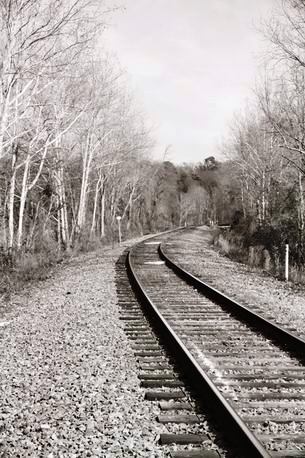
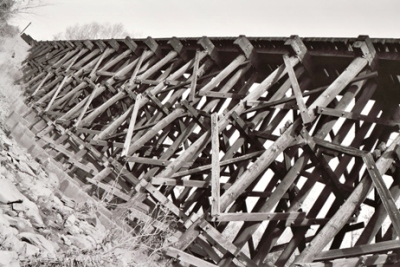
We already know about the short rise and long fall of Hamburg, and we know about the bad things that happened there. We know that Hamburg's founder, Henry Shultz, eventually tried to kill himself. We know that the Hamburg Riot played a key role in the election of Governor Wade Hampton III, the "Saviour of South Carolina," who'd been called "a veritable god of war" by a fellow Confederate soldier, and whose campaign against the policies of Reconstruction had been met with "something akin to religious ecstasy," according to historian Walter Edgar. We also know that the little that remains of Hamburg is also pretty spooky. But, the Hamburg-Charleston Railroad was undeniably a good thing for the whole country. Although, characteristically, the railroad sealed the eventual doom of Hamburg and at least one person was killed by it in spectacular fashion. This is not a picture of the Hamburg-Charleston line. In fact, it's the trestle below the aqueduct by the Augusta Canal. Sneaky of me, I know.
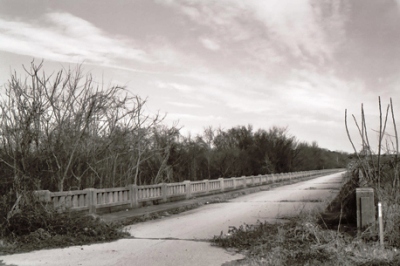
In the 1820's, during what might have been the first economic recession in US history, the politicians of Charleston, SC, were trying to find a way to get more trade into and out of their city. Charleston, of course, is close to the sea, and in those days was isolated by countless swamps, rivers, pine forests, and muddy wagon trails. It was said to be easier to get to Philadelphia from Charleston than it was to get to the towns of northwest South Carolina. The businessmen of Charleston wanted easy access to Augusta, in particular, where the Savannah River was a major conduit of trade. So, in 1827, it was decided that a railroad would be built between Charleston and Hamburg, a boldly brazen and brash move. This railroad would be the first steam-powered railway in the country. At 136 miles long, it would also be the longest railway in the world. The photo is of an abandoned bridge off the Aiken-Augusta Highway in the area of old Hamburg. Just beyond the bottom left of the frame is the spot where a kidnapped man was burned to death in his car. Pleasant.
By the time the line reached Hamburg on October 3, 1833, the Baltimore and Ohio Railroad, which was also attempting to get a steam-powered train up and running, had only completed 13 miles of track. But not everyone was excited about the railroad coming to town. One prominent landowner in Barnwell, SC, refused to allow the train to pass through his town at all as he had adopted the strange notion that the machine would kill his slaves.
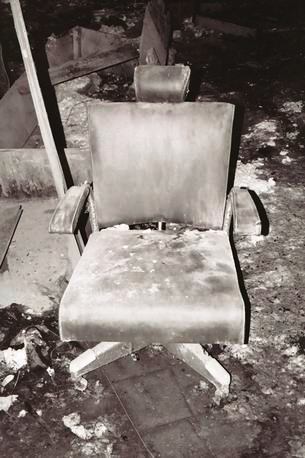
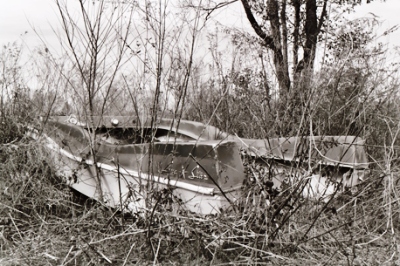
After an early trial run, an observer had this to say about the Best Friend of Charleston: "(The engine) flew on the wings of wind at the speed of 15 to 25 miles per hour, annihilating time and space...leaving all the world behind...and landed us all safe at the Lines before any of us had time to determine whether or not it was prudent to be scared." Uh, okay then. However, the train proved to be unstable at "high" speed and a 10 mph speed limit was imposed for the sake of safety. And, as it happened, it WAS prudent to be scared. The Best Friend of Charleston exploded not long after, killing the fireman, scalding the engineer, and sending locomotive shrapnel all over the countryside. The train had yet to get 10 miles outside of Charleston. But there was no turning back. The usable bits of the blown-up choo-choo were collected and a second locomotive built, the aptly-titled Phoenix. Once the line was complete, the Charleston-Hamburg Railroad was the first line to offer scheduled passenger service. It was also the first line to carry the US Mail. And Branchville, SC, became the first railroad junction in the world. That's a lotta firsts. This is a beached boat on old Hamburg land, just along the Savannah River, fast being covered by an upscale housing development.
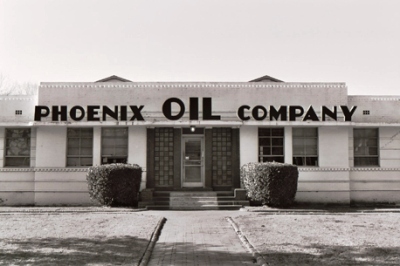
Originally, the Charleston-Hamburg Railroad was supposed to go all the way to Memphis, TN. However, it never really made it past Hamburg. In fact, it was difficult to get the line extended to nearby Columbia, SC. When a line was finally constructed to Columbia from Greenville, it meant trouble for Hamburg. When a depot was finally built in Augusta in 1852, it meant the end of Hamburg's importance as a railroad town altogether. It also meant the beginning of a long slide into obscurity. Incidentally, the route to Memphis was not completed until 1858. This is a random shot of the Phoenix Oil Company, probably not named after the locomotive, but a nice example of the Art-Deco influence that's still to be found around Augusta, tucked into forgotten corners.
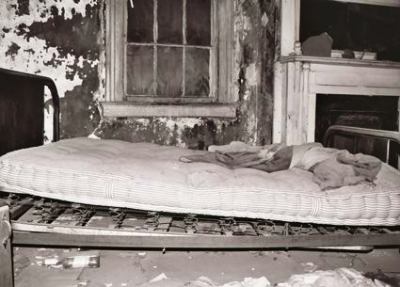
In the 1980's, folks put together a little celebration of the Charleston-Hamburg Railroad, even going so far as to give people rides on a replica of the Best Friend of Charleston. But, after a century-and-a-half of continous service, this publicity push was the end of the line, so to speak, for the original railway. By the mid-1980's, a large section of track from Branchville, in the middle of the state, to Aiken was abandoned. The line from Augusta to Graniteville does still operate (on which a train just derailed), with disastrous results), and the first photo of this post is of part of that stretch (I think!). The picture shown has nothing to do with trains. It's an outtake from the Rooming House. When I first stuck my head around the door I saw something black and furry scamper across the mattress and off into the darkness. Aw, cute, a rat. Note whiskey bottle under bed.
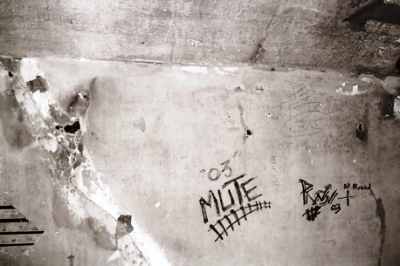
I got my info for this post from a variety of sources. One of the best was a now-gone site on abandoned railroads. A second was a page off the Henry Shultz and Hamburg, SC website. The photo here is another from the Rooming House. That's real train-hopping hobo graffiti on the wall of a third floor bedroom. Whenever I'd get stuck at the tracks down on Laney-Walker I'd assuage my annoyance by looking for the hobo graffiti on the sides of boxcars. Here are some great photos, none of which are by me.
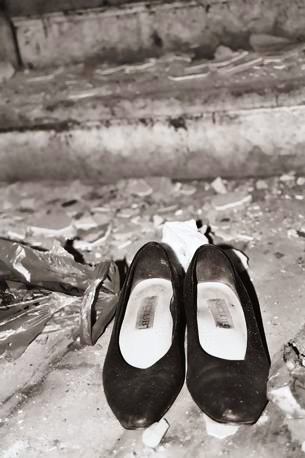
1 comment:
I am enjoying your site immmensely. I love your combination of regional-oriented photos with your ever so slight tongue-in-cheek attitude. Keep on...
G N Bassett
www.floridanorthcoast.net
Post a Comment